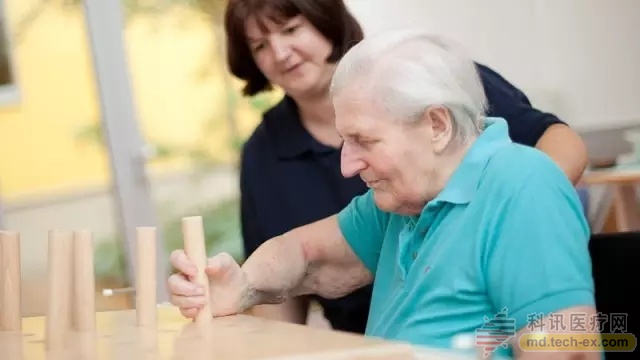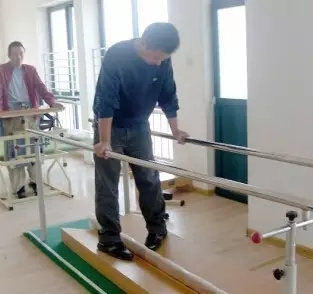Release date: 2016-12-12
Cerebrovascular disease is called a stroke, including a series of cerebrovascular diseases such as cerebral hemorrhage, cerebral infarction, and subarachnoid hemorrhage. Hemiplegia, dysphagia, speech disorder, cognitive impairment, and vascular dementia are the most common strokes. The sequelae; the only effective way to treat these sequelae is comprehensive rehabilitation, early, regular and comprehensive rehabilitation. However, the wrong rehabilitation treatment is not only harmful to the patient, but also very harmful. The following are some of the major mistakes in stroke rehabilitation.
Misunderstanding 1: Injection can take medicine to cure hemiplegia (mistakes, disorder treatment, white money)
The best way to treat a stroke with hemiplegia, not to talk, or not to eat is to take medicine and take medicine. Most Chinese people basically think so, and take it for granted. If you are sick, you must take an injection to take medicine to cure it, even including big ones. Hospital neurology, emergency department, neurosurgery and other doctors and nurses think so. In fact, for cerebral infarction, if the brain cells are blocked, if the brain cells are ischemia for more than 6 hours, irreversible necrosis will occur. There are no drugs that can save these brain cells, that is, there is no effect in taking injections. Of course, some drugs in the acute phase, such as dehydration drugs, anti-platelet aggregation drugs, and blood lipid-lowering drugs, prevent patients from getting sick again. Stabilizing the condition is effective and necessary. This is the best way at present; and cerebral hemorrhage is simply no drug to cure, and rehabilitation is currently the only effective method.

Myth 2: Rehabilitation treatment has to wait until the sequelae begins (delayed treatment time, missed the best treatment period)
Many stroke patients and their families mistakenly believe that rehabilitation treatment will not begin until the sequelae, and one month after waiting for the illness. Rehabilitation can only be done after three months. In fact, the earlier the formal rehabilitation training begins, the better the rehabilitation effect, but many people miss the best time to recover because of this concept (within three months of onset). In fact, regardless of cerebral hemorrhage or cerebral infarction patients, as long as the condition is stable, rehabilitation training can begin. Generally speaking, as long as the cerebral infarction patient is conscious, the vital signs are stable, the condition is no longer developed, and the recovery can be performed after 48 hours. From small to large, step by step. Most cerebral hemorrhage rehabilitation can begin in the 7-14 field after the disease.

Myth 3: Rehabilitation treatment is very simple, that is, moving arms and pulling legs (self-righteous, serious consequences)
This is the most serious mistake. Rehabilitation training must be guided by professionals such as rehabilitation doctors, rehabilitation therapists, and rehabilitation nurses. It is based on the specific conditions of each patient, and then targeted treatment plans are designated. The therapist performs step-by-step training. Specific can be accurate to each muscle, the training of each movement is not random, otherwise, there will be problems, such as a lot of patients have shoulder subluxation, shoulder pain, shoulder hand syndrome and other issues, This is not caused by the requirements of the rehabilitation doctor and the therapist, and the consequences are very serious, because once the shoulder-hand syndrome occurs, the arm of the patient is basically disabled and the hand is disabled. Therefore, rehabilitation treatment should not be self-proclaimed and self-righteous, and should be done according to the guidance of doctors, therapists, and nurses.

Myth 4: Excessive force causes joint damage (method wrong, causing new injuries)
When the sensory function and muscle tension of the human body are normal, the movement of the limbs is instinctively protected. For example, in an elderly person, due to the aging of the ligament and joint capsule, the shoulder joint can only move up to 150 degrees when the arm is lifted forward. If the arm is lifted upwards by external force, it will feel shoulder pain, and the muscle will also have a reflective contraction to counteract inappropriate movement. This is self-protection. If the protection mechanism does not exist, the shoulder joint can be pulled to the range of motion that cannot be reached normally, and the muscles, tendons and other tissues around the joint will be injured. Stroke patients with hemiplegia are in such a state in the early stage of the disease, and the muscles are slack. The family members of the patients or the caregivers who have not received special training are very concerned about the patient's concern and hope that they can resume their motor function at an early date and rush to do too much passive exercise when their affected limbs can not actively perform various sports. The patient has soft tissue damage and even causes joint dislocation and fracture. Although some of the injuries are mild, there is no redness or congestion from the appearance after the injury, but these injuries can cause chronic inflammation and adhesion inside the joints without knowing it. This type of injury often occurs in the shoulder and hip joints.
Myth 5: Repeated practice and aggravation (in vain, no harm)
Many patients guide the importance of rehabilitation training. The night is hard work and hard work, but it is only in vain and even harmful to pay attention to methods and methods. Most of the patients with hemiplegia have muscle spasms on the temporal side of the limb. Appropriate rehabilitation training can be such that the tendon is relieved, so that the limb movement tends to coordinate. However, if the wrong training method is used, for example, using the hand on the side of the squat to repeatedly practice the force, the muscles of the upper limbs responsible for joint flexion will be aggravated, and the fingers will be opened, but the recovery of the opponent's function will be more serious. Obstruction. Hemiplegia is not just a problem of muscle weakness, and the imbalance of muscle contraction is also an important cause of motor dysfunction. Therefore, it cannot be mistaken that rehabilitation training is strength training.

Myth 6: The sooner you walk down the ground, the faster you recover, the better (formed a circled gait, ugly and awkward)
When a normal person walks, the joints of the lower limbs are stretched and flexed in a coordinated manner in accordance with a certain regularity, and the movements supporting the body and the step are alternately completed. Patients with hemiplegia who are eager to start walking without proper training will experience a typical hemiplegic gait. Normal people can flexibly flex the hips, knees, and ankles to the proper angle when they need to move forward, so that the length of the lower limbs is "shortened" and the feet are easily lifted off the ground. The patients with hemiplegia are said to be stiff and the toes sag, making the limbs "extended" and lifting off the ground. It is only difficult to pull the lower limbs up by tilting the torso and lifting the pelvis. The extent of this pull-up is very limited. It is still not possible for the lower limb to move forward smoothly. It also draws an arc to the outside and then falls back to the front of the body. This is the “circle†gait that is common to people with hemiplegia, and is a typical useless syndrome. The root cause is that improper training aggravates the muscle spasm that is responsible for the extension of the joints of the lower limbs, making the joint flexion action difficult. If the normal rehabilitation training can be started early, and the walking training is carried out on the basis of the coordinated movement of the affected limbs, a relatively close walking posture can be formed and the walking efficiency can be improved.
Source: Global Rehabilitation Information
Optics,Blank Glass,Glass Blanks For Crafts,Glass Ornament Blanks
Shandong Freedom Technology Co.,Ltd , https://www.sdfreedomtech.com